Abstract
Certain human hereditary conditions, notably those with low penetrance and those which require an environmental event such as infectious disease exposure, are difficult to localize in pedigree analysis, because of uncertainty in the phenotype of an affected patient's relatives. An approach to locating these genes in human cohort studies would be to use association analysis, which depends on linkage disequilibrium of flanking polymorphic DNA markers. In theory, a high degree of linkage disequilibrium between genes separated by 10-20 cM will be generated and persist in populations that have a history of recent (3-20 generations ago) admixture between genetically differentiated racial groups, such as has occurred in African Americans and Hispanic populations. We have conducted analytic and computer simulations to quantify the effect of genetic, genomic, and population parameters that affect the amount and ascertainment of linkage disequilibrium in populations with a history of genetic admixture. Our goal is to thoroughly explore the ranges of all relevant parameters or factors (e.g., sample size and degree of genetic differentiation between populations) that may be involved in gene localization studies, in hopes of prescribing guidelines for an efficient mapping strategy. The results provide reasonable limits on sample size (200-300 patients), marker number (200-300 in 20-cM intervals), and allele differentiation (loci with allele frequency difference of > or = .3 between admixed parent populations) to produce an efficient approach (> 95% ascertainment) for locating genes not easily tracked in human pedigrees.
Full text
PDF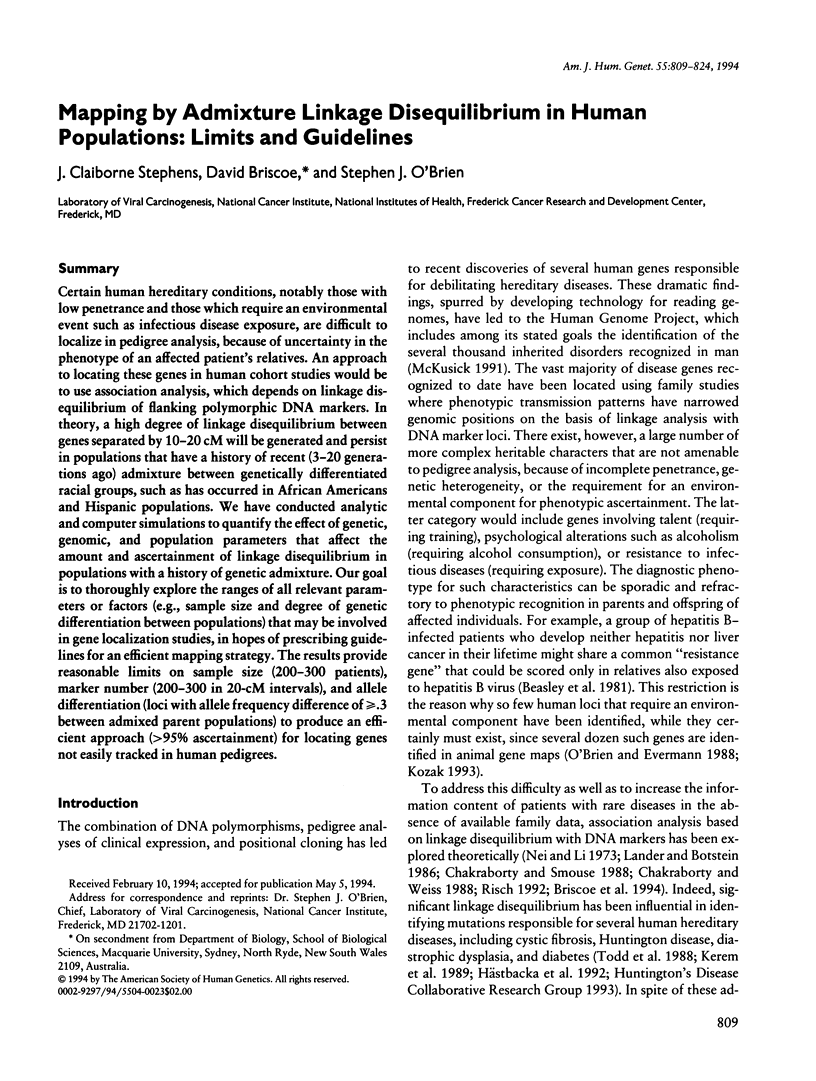
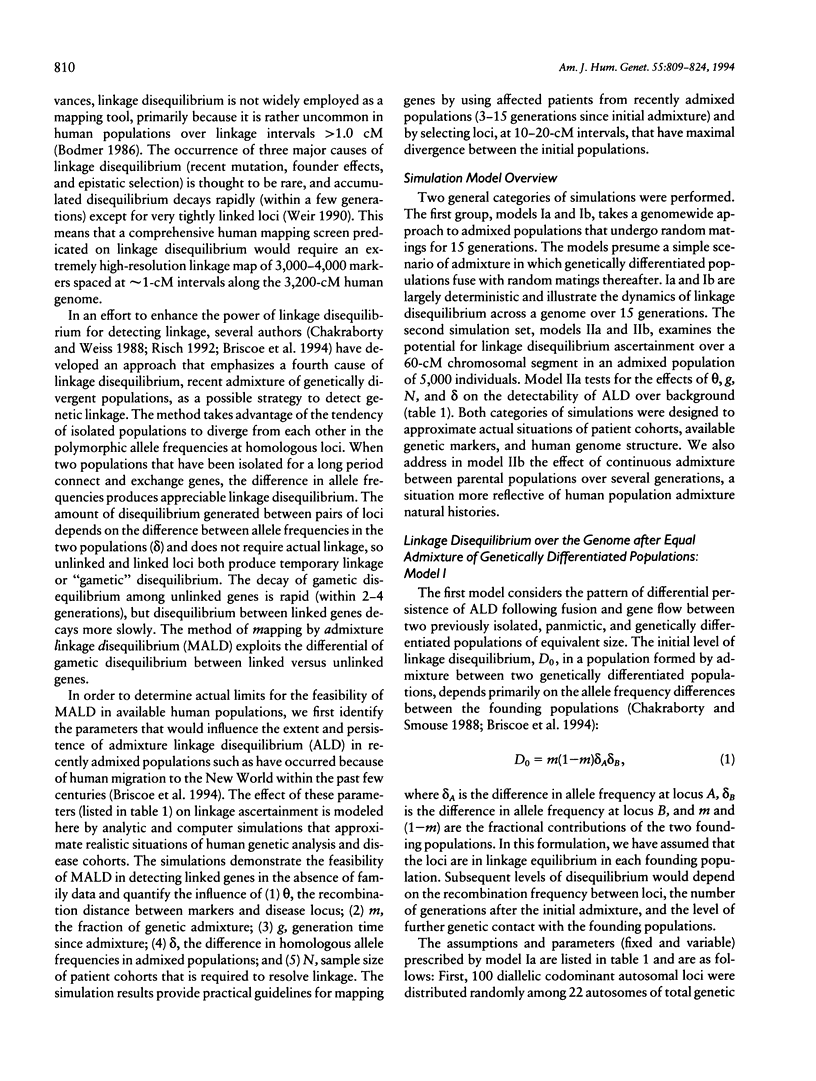
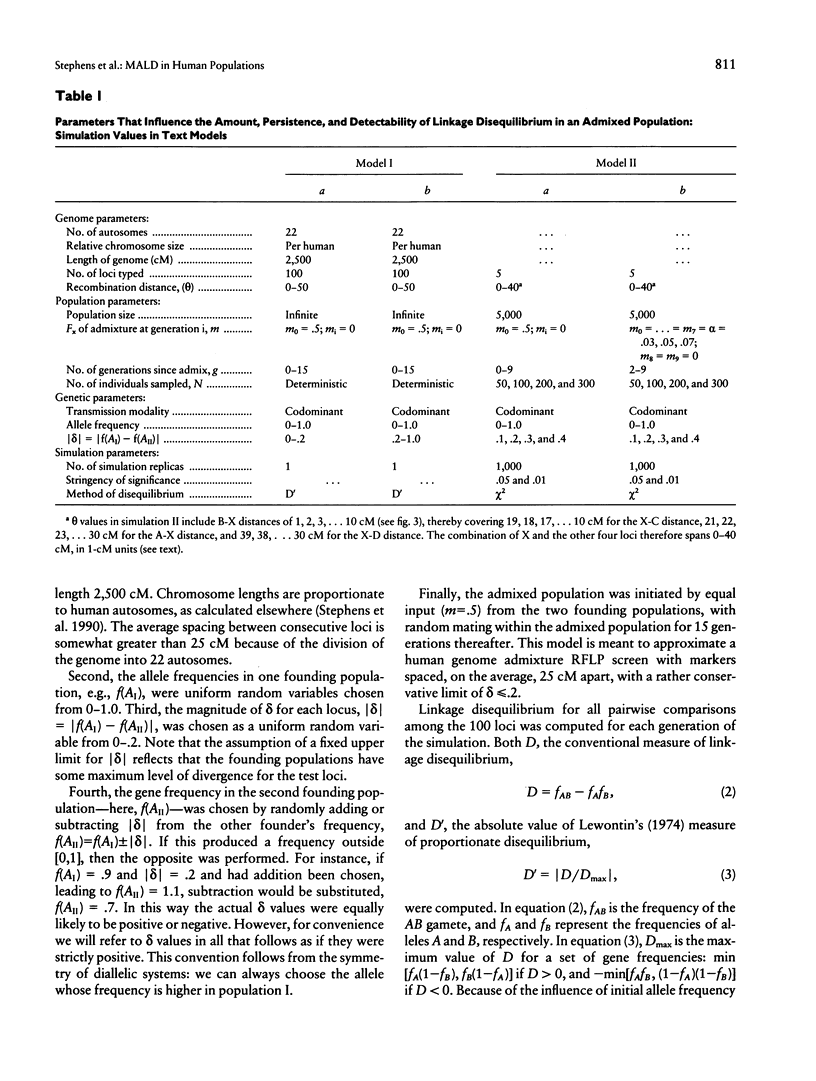
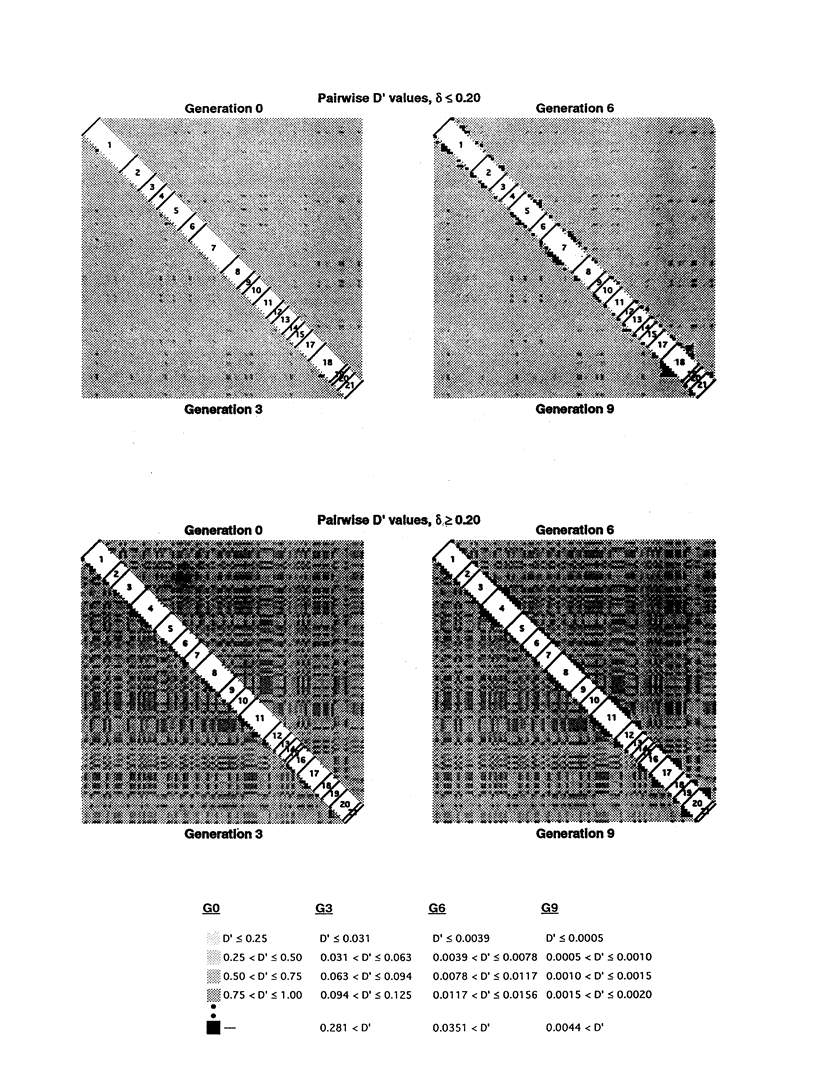
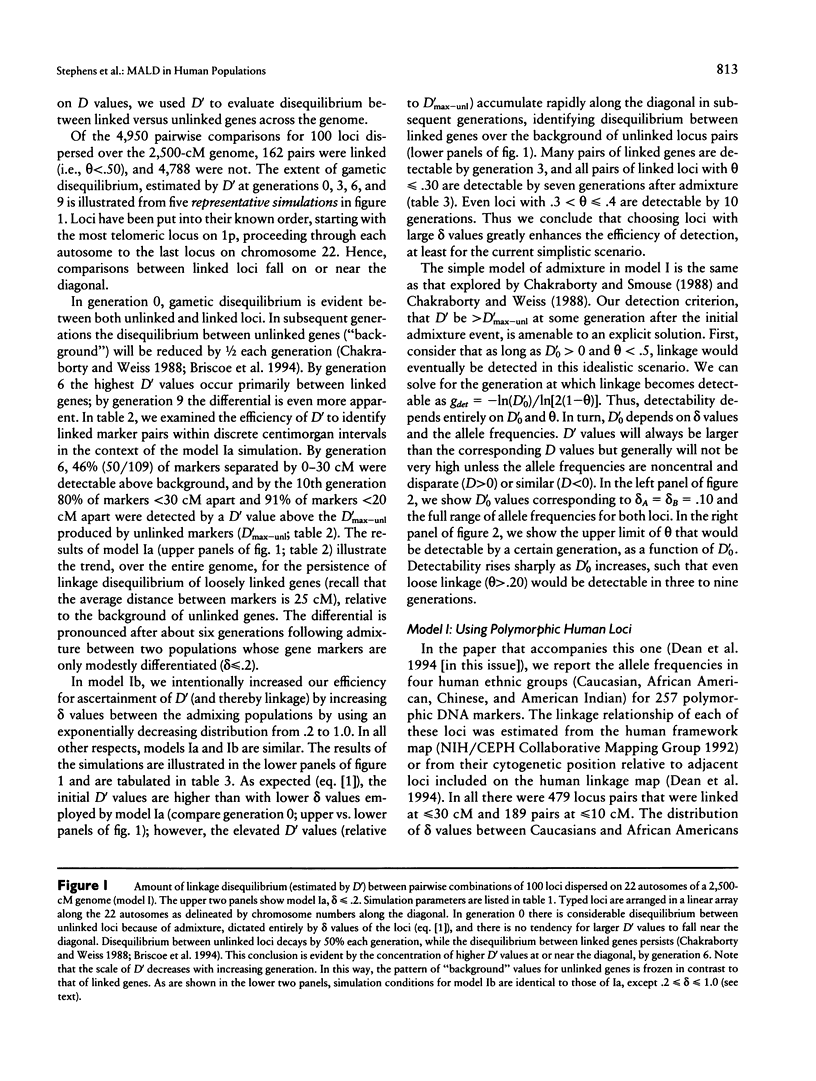
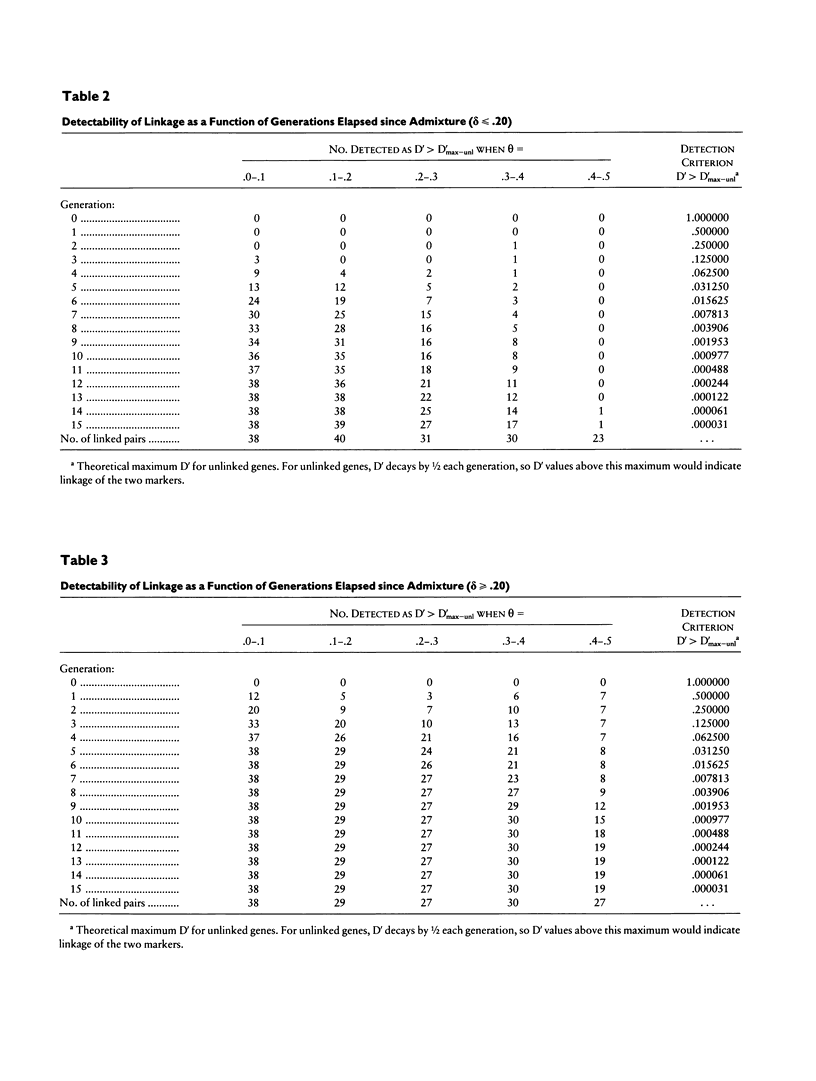
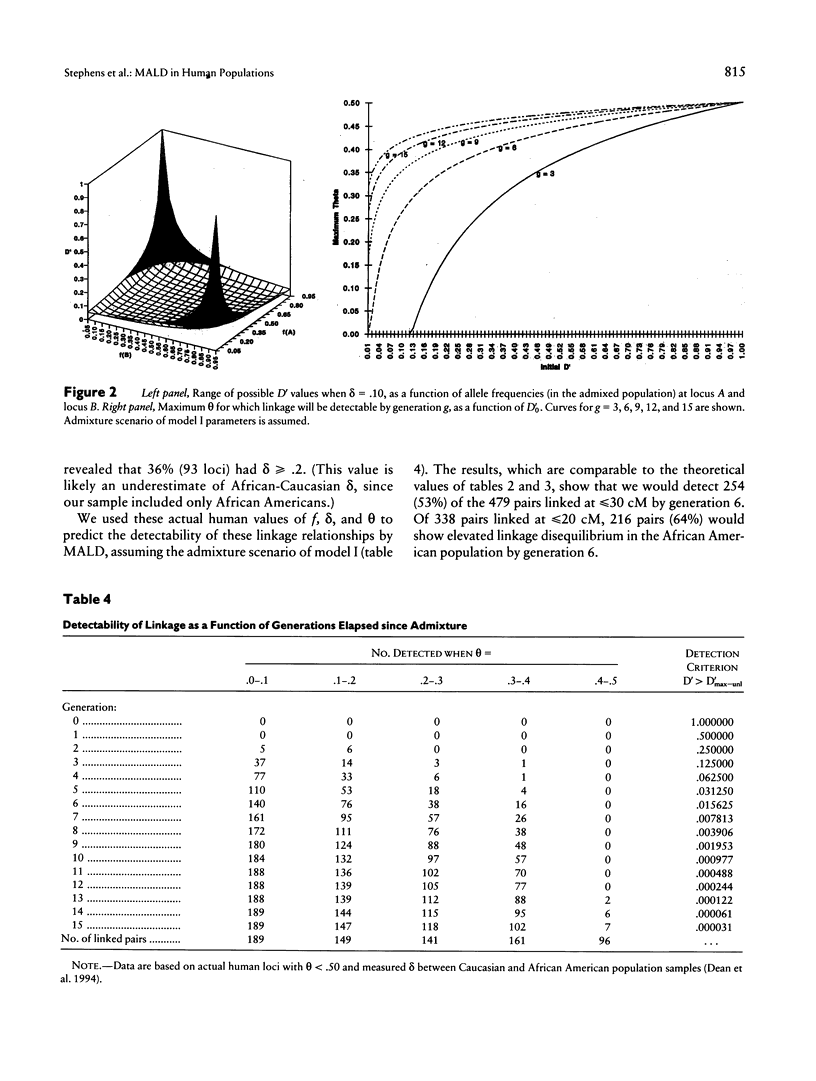
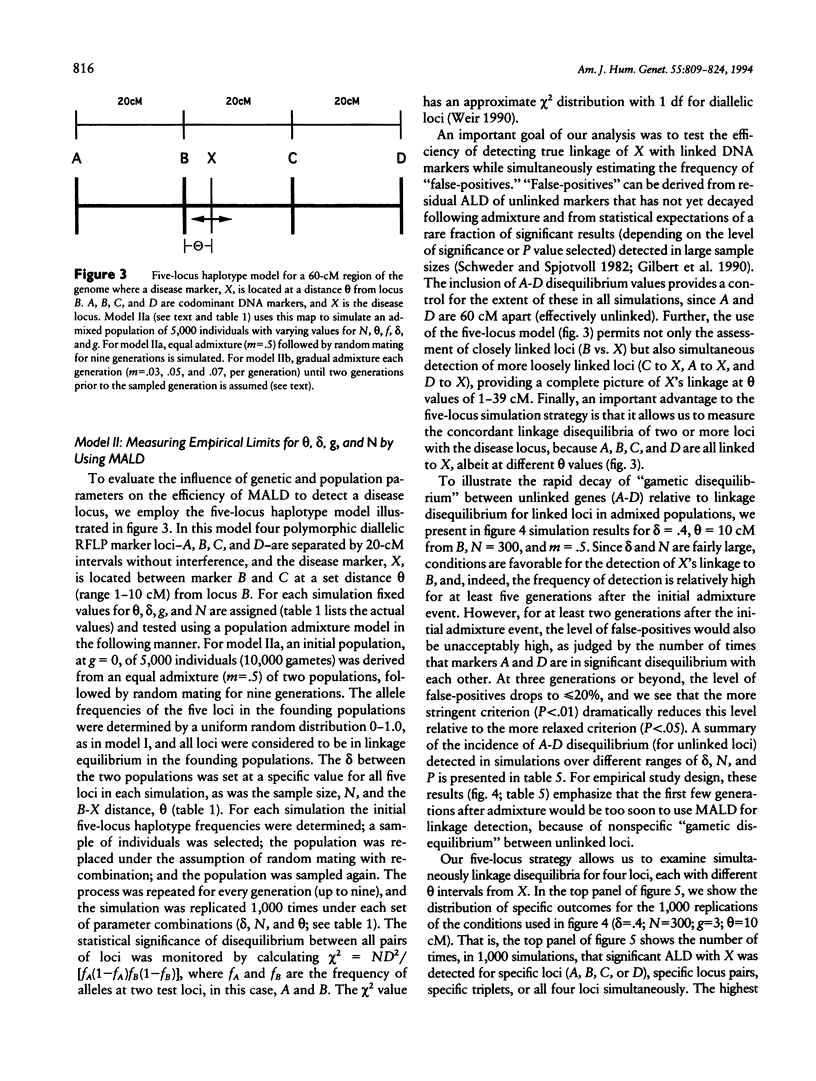
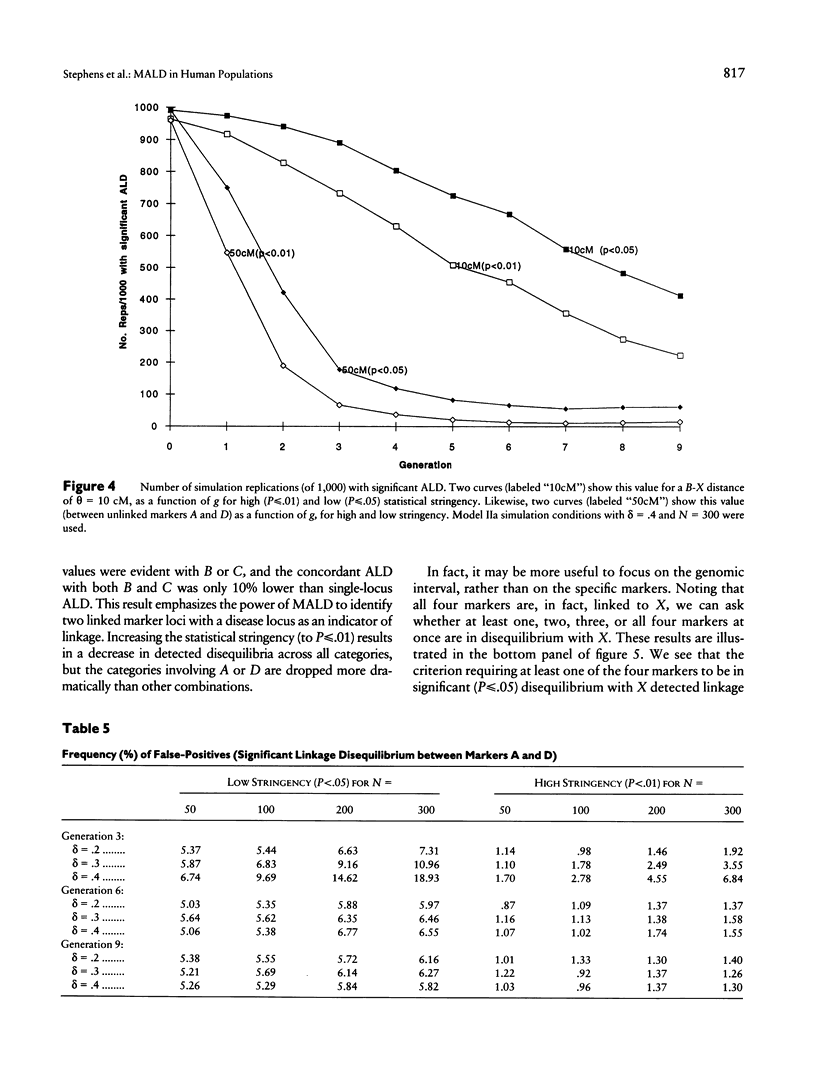
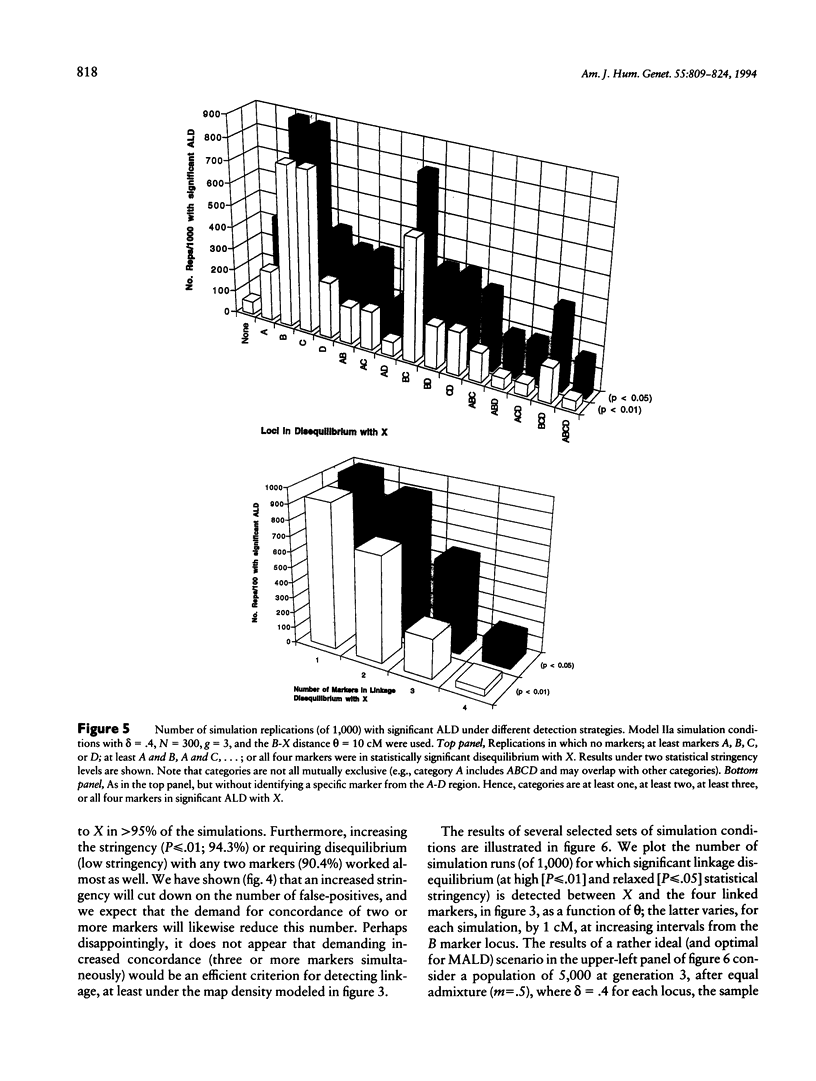
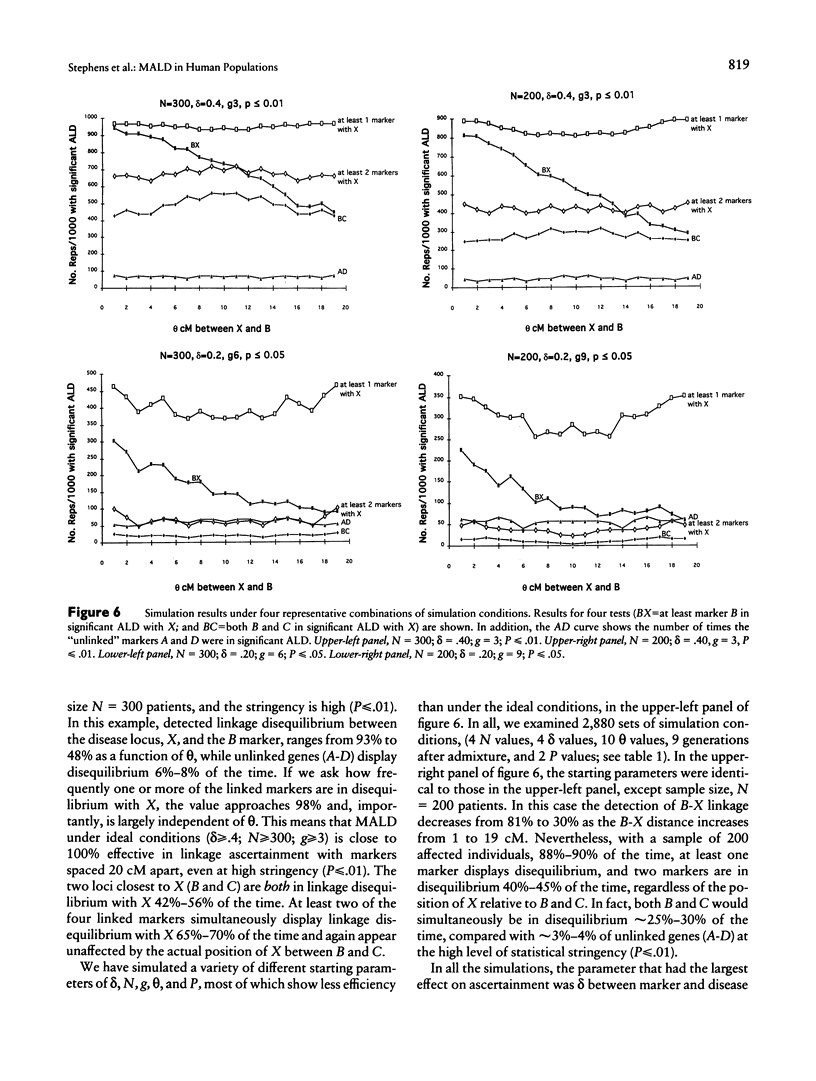
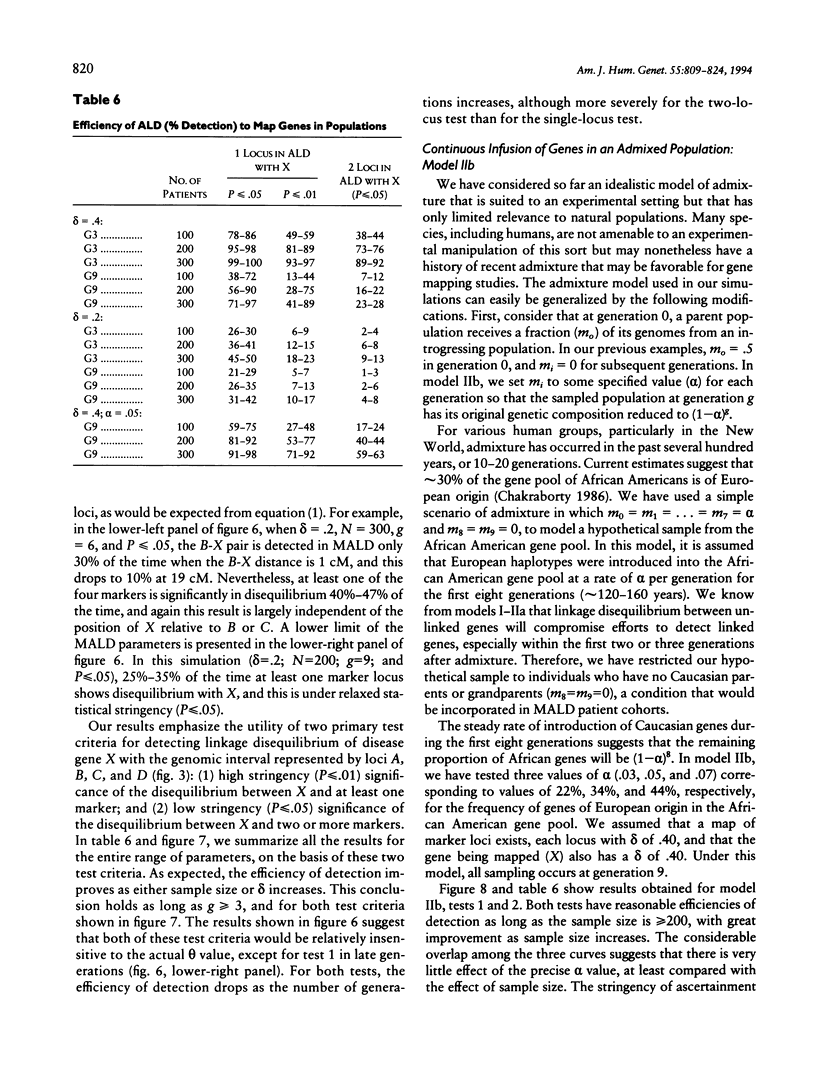
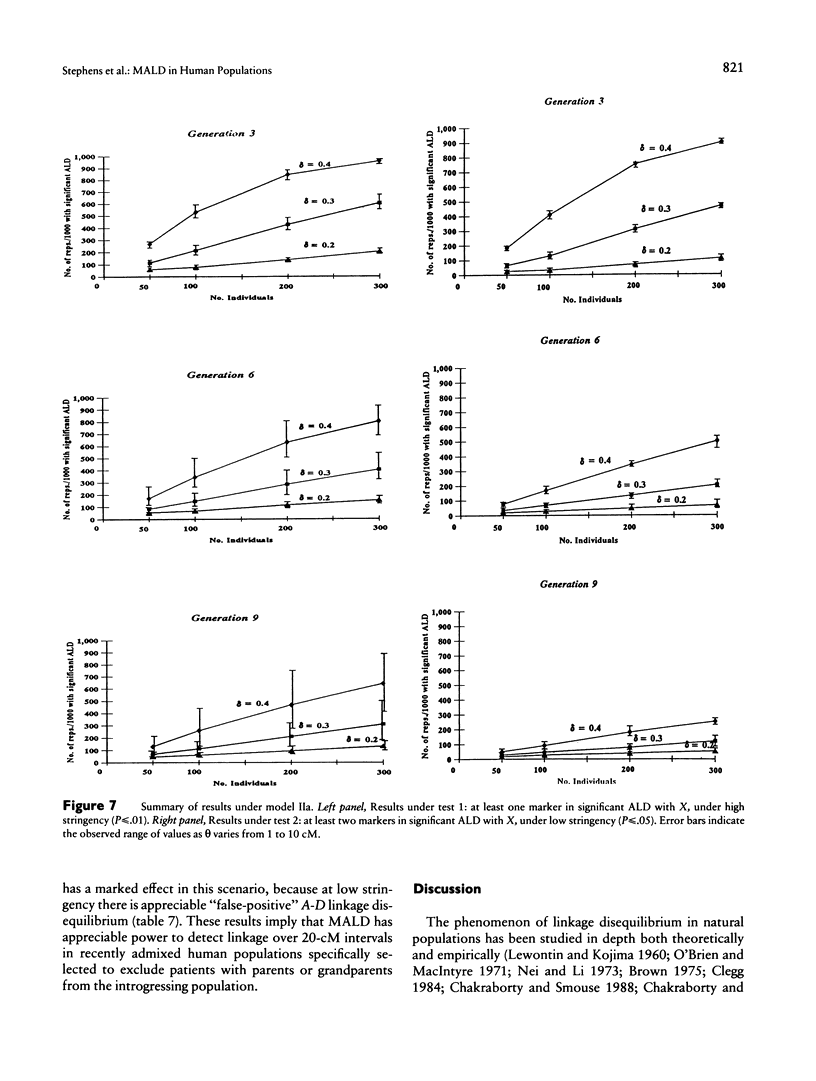
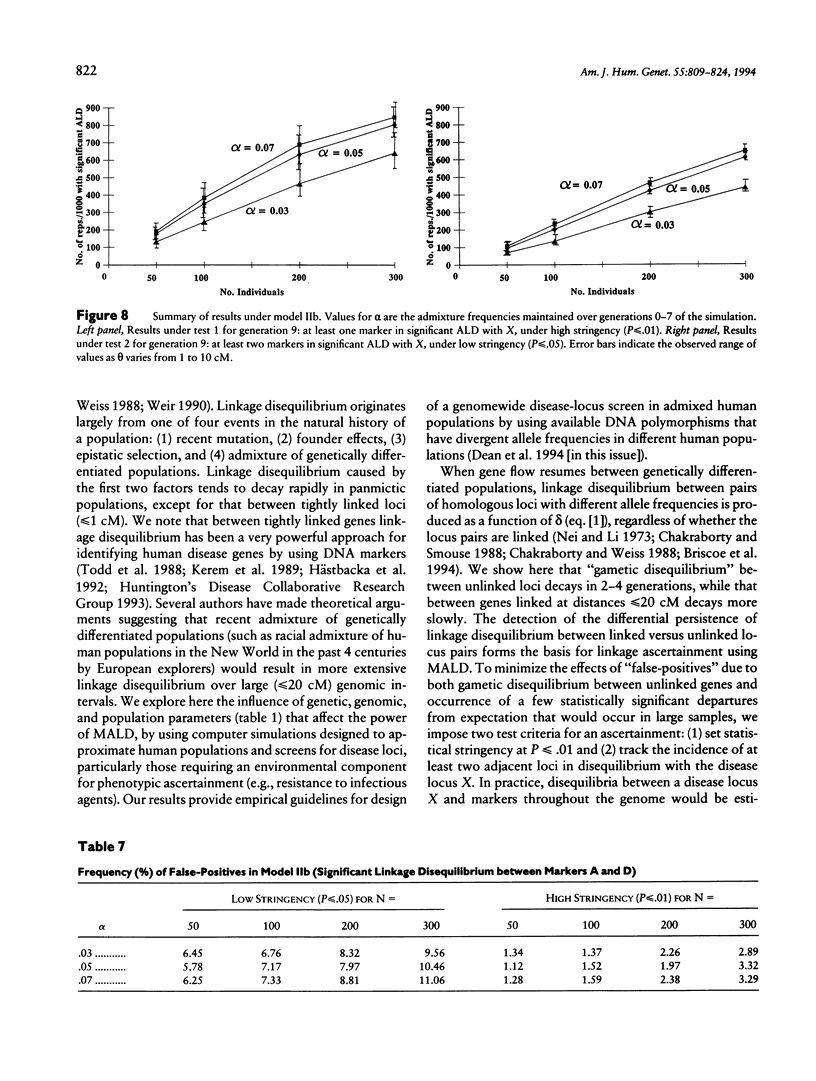
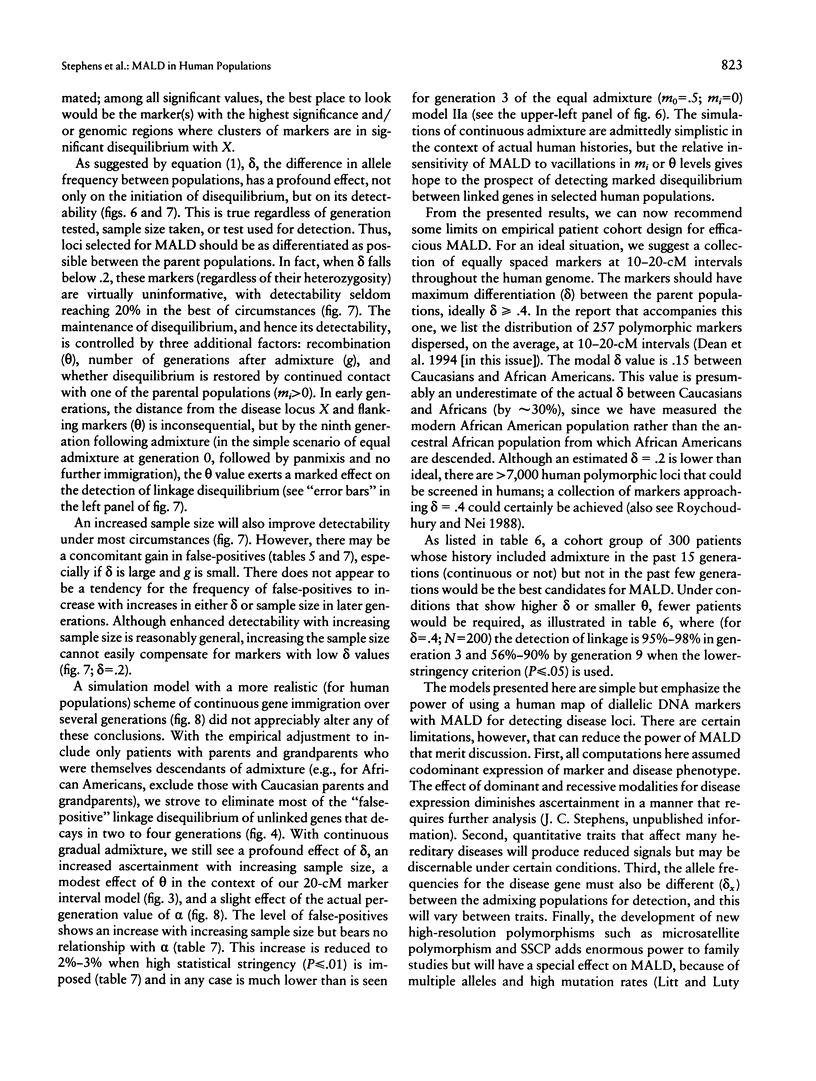
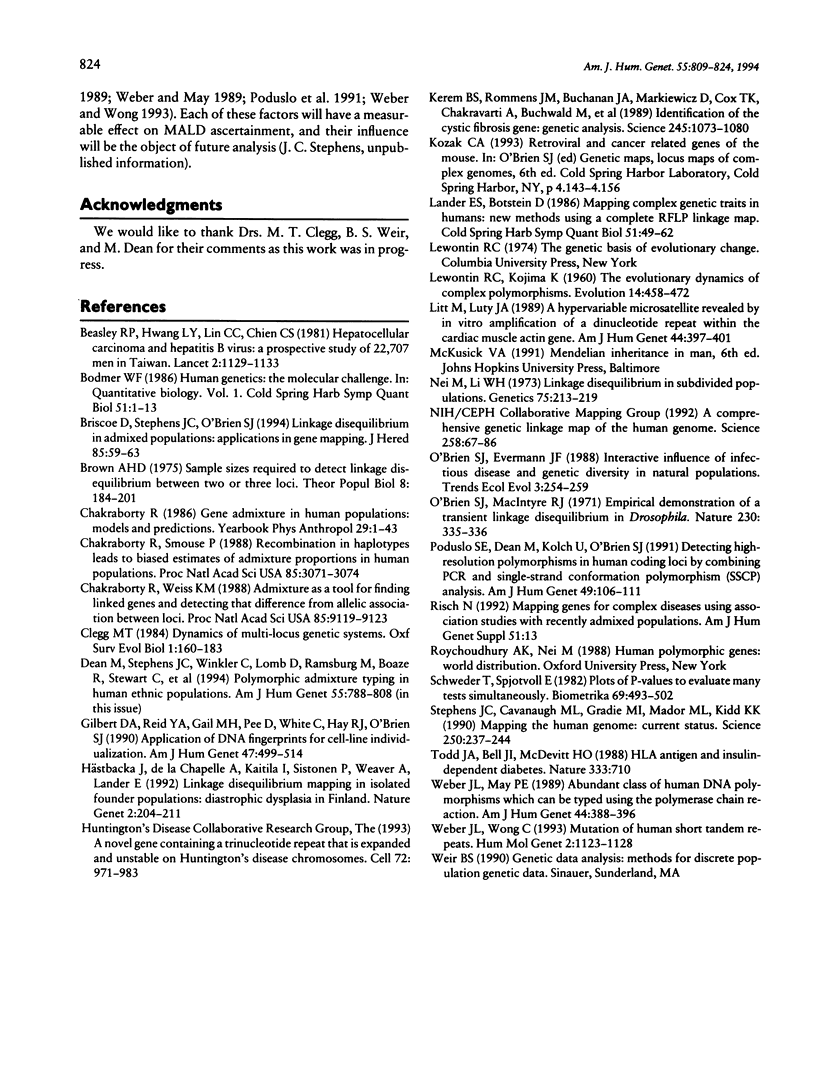
Selected References
These references are in PubMed. This may not be the complete list of references from this article.
- Beasley R. P., Hwang L. Y., Lin C. C., Chien C. S. Hepatocellular carcinoma and hepatitis B virus. A prospective study of 22 707 men in Taiwan. Lancet. 1981 Nov 21;2(8256):1129–1133. doi: 10.1016/s0140-6736(81)90585-7. [DOI] [PubMed] [Google Scholar]
- Bodmer W. F. Human genetics: the molecular challenge. Cold Spring Harb Symp Quant Biol. 1986;51(Pt 1):1–13. doi: 10.1101/sqb.1986.051.01.003. [DOI] [PubMed] [Google Scholar]
- Briscoe D., Stephens J. C., O'Brien S. J. Linkage disequilibrium in admixed populations: applications in gene mapping. J Hered. 1994 Jan-Feb;85(1):59–63. [PubMed] [Google Scholar]
- Brown A. H. Sample sizes required to detect linkage disequilibrium between two or three loci. Theor Popul Biol. 1975 Oct;8(2):184–201. doi: 10.1016/0040-5809(75)90031-3. [DOI] [PubMed] [Google Scholar]
- Chakraborty R., Smouse P. E. Recombination of haplotypes leads to biased estimates of admixture proportions in human populations. Proc Natl Acad Sci U S A. 1988 May;85(9):3071–3074. doi: 10.1073/pnas.85.9.3071. [DOI] [PMC free article] [PubMed] [Google Scholar]
- Chakraborty R., Weiss K. M. Admixture as a tool for finding linked genes and detecting that difference from allelic association between loci. Proc Natl Acad Sci U S A. 1988 Dec;85(23):9119–9123. doi: 10.1073/pnas.85.23.9119. [DOI] [PMC free article] [PubMed] [Google Scholar]
- Dean M., Stephens J. C., Winkler C., Lomb D. A., Ramsburg M., Boaze R., Stewart C., Charbonneau L., Goldman D., Albaugh B. J. Polymorphic admixture typing in human ethnic populations. Am J Hum Genet. 1994 Oct;55(4):788–808. [PMC free article] [PubMed] [Google Scholar]
- Gilbert D. A., Reid Y. A., Gail M. H., Pee D., White C., Hay R. J., O'Brien S. J. Application of DNA fingerprints for cell-line individualization. Am J Hum Genet. 1990 Sep;47(3):499–514. [PMC free article] [PubMed] [Google Scholar]
- Hästbacka J., de la Chapelle A., Kaitila I., Sistonen P., Weaver A., Lander E. Linkage disequilibrium mapping in isolated founder populations: diastrophic dysplasia in Finland. Nat Genet. 1992 Nov;2(3):204–211. doi: 10.1038/ng1192-204. [DOI] [PubMed] [Google Scholar]
- Kerem B., Rommens J. M., Buchanan J. A., Markiewicz D., Cox T. K., Chakravarti A., Buchwald M., Tsui L. C. Identification of the cystic fibrosis gene: genetic analysis. Science. 1989 Sep 8;245(4922):1073–1080. doi: 10.1126/science.2570460. [DOI] [PubMed] [Google Scholar]
- Lander E. S., Botstein D. Mapping complex genetic traits in humans: new methods using a complete RFLP linkage map. Cold Spring Harb Symp Quant Biol. 1986;51(Pt 1):49–62. doi: 10.1101/sqb.1986.051.01.007. [DOI] [PubMed] [Google Scholar]
- Litt M., Luty J. A. A hypervariable microsatellite revealed by in vitro amplification of a dinucleotide repeat within the cardiac muscle actin gene. Am J Hum Genet. 1989 Mar;44(3):397–401. [PMC free article] [PubMed] [Google Scholar]
- Nei M., Li W. H. Linkage disequilibrium in subdivided populations. Genetics. 1973 Sep;75(1):213–219. doi: 10.1093/genetics/75.1.213. [DOI] [PMC free article] [PubMed] [Google Scholar]
- O'Brien S. J., MacIntyre R. J. Transient linkage disequilibrium in Drosophila. Nature. 1971 Apr 2;230(5292):335–336. doi: 10.1038/230335a0. [DOI] [PubMed] [Google Scholar]
- Poduslo S. E., Dean M., Kolch U., O'Brien S. J. Detecting high-resolution polymorphisms in human coding loci by combining PCR and single-strand conformation polymorphism (SSCP) analysis. Am J Hum Genet. 1991 Jul;49(1):106–111. [PMC free article] [PubMed] [Google Scholar]
- Stephens J. C., Cavanaugh M. L., Gradie M. I., Mador M. L., Kidd K. K. Mapping the human genome: current status. Science. 1990 Oct 12;250(4978):237–244. doi: 10.1126/science.2218527. [DOI] [PubMed] [Google Scholar]
- Todd J. A., Bell J. I., McDevitt H. O. HLA antigens and insulin-dependent diabetes. Nature. 1988 Jun 23;333(6175):710–710. doi: 10.1038/333710a0. [DOI] [PubMed] [Google Scholar]
- Weber J. L., May P. E. Abundant class of human DNA polymorphisms which can be typed using the polymerase chain reaction. Am J Hum Genet. 1989 Mar;44(3):388–396. [PMC free article] [PubMed] [Google Scholar]
- Weber J. L., Wong C. Mutation of human short tandem repeats. Hum Mol Genet. 1993 Aug;2(8):1123–1128. doi: 10.1093/hmg/2.8.1123. [DOI] [PubMed] [Google Scholar]


